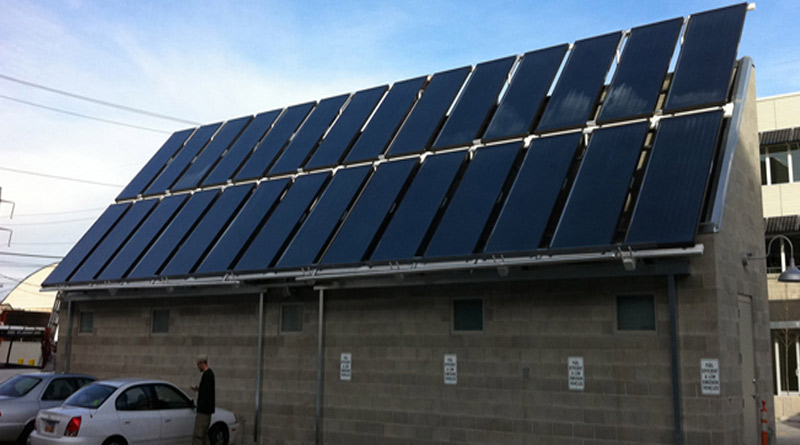Using Solar Heat for Home Heating
As fossil fuels like oil and natural gas become ever more expensive and less available, solar heat is becoming increasingly popular for use in domestic home heating applications. Many people are actively looking for alternative forms of energy to use to heat their homes, and for renewable energy sources that can be easily tapped if the current energy infrastructure becomes obsolete. A solar heating system is the perfect solution for many homeowners and provides ready access to the most abundant renewable energy source around: sunlight.
Solar heat for home heating comes in two basic forms: passive and active. A passive solar home heating system makes use of sun-facing house exposures, heat retaining materials (like stone and tile), and interior spaces that naturally trap solar heat (like solariums or trombe walls).
A passive solar system doesn’t ‘do’ anything except store the natural heat of the sun. Homeowners who live in temperate or desert climates can make good use of passive solar heat to keep a house comfortable in the evening and at night, and can thereby avoid using nonrenewable forms of energy to generate heat that is abundant during the day naturally.
Even homes in colder climates can install heat-retaining sun-facing windows that harness solar heat during colder parts of the year (in the form of sunlight) but don’t let the heat back out. Combining such specialty windows in a sunny room with a heat retaining floor can significantly cut back on heating costs and reduce that homeowner’s carbon footprint with minimal investment of money or time.
Active solar heat makes use of solar panels to heat water or air (depending on the kind of system chosen), which is then circulated throughout the house to keep it warm. The cost of installing active solar heat depends on the type and the size of the solar collectors needed. Average costs for active solar heat run between $30 and $80 per square foot, but the cost is reduced significantly if solar collectors are used to heat water for the home as well, reducing utility costs over time.
Active solar heat is somewhat more practical for new construction, since the cost offset begins immediately, but even existing construction in the coldest climates can usually benefit from some combination of active and passive solar heat. Many people wrongly assume that solar heat has to be all or nothing, when actually it is an incredibly flexible resource. Rethinking the use of existing sunlight as a passive solar heat resource and adding a solar water heater are two inexpensive solar options that anyone can tap.
Moving into more expensive whole-house active solar heating systems can become cost effective even for existing construction when government tax credits are factored in, or the cost of nonrenewable energy rises significantly (as it already has in many parts of the U.S. and Canada). Whether a homeowner is looking to reduce utility bills or replace a dated system with a new solar heating system, solar energy is here to stay.
New solar options are being developed every year, and more and more ordinary people are getting onboard. The savings are substantial, and the ecological benefit is priceless.

